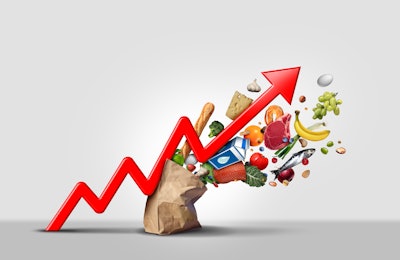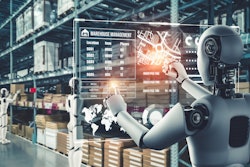
A current issue facing many American families is the cost of food — both at grocery stores and restaurants. Consumers are quick to notice increasing prices, and in some cases, lower quality food. This isn’t just anecdotal. A 2022 study done by the U.S. Department of Agriculture shows that the food consumers eat at home (i.e., groceries) is predicted to increase in cost between 10-11% this year, while food away from home (i.e., restaurant purchases) will increase between 6.5-7.5%.
You might be thinking, “What is the cause of these inflated prices?” The answer is supply chain inefficiency.
When the supply chain is inefficient, consumers end up paying additional costs for almost everything. That is the current trend seen in the food and agriculture industries specifically. Another 2022 study shows that 7% of the economy and 29% of American jobs are linked to food and agriculture. Because many people rely on these sectors, supply chain efficiency is vital to the health of the economy and American consumers.
So, what is the proposed solution? Utilizing historical data to accurately manage supply chain output and reduce simulated waste.
Why is supply chain management important in food and agriculture?
Supply chain management is an essential part of keeping the supply chain running smoothly, as it affects everyone in the process. To be sure, this is not specific to any one industry. When you consider the process of how goods get to consumers, you can see how companies across all industries are connected. When supply chains are operating at max efficiency, everyone thrives. Inversely, when supply chains are struggling due to inefficiency, everyone pays the price.
A good example of this is seasonal distribution. In the fall, seasonal crops take precedence over other items from the food industry and other industries. However, if supply chain executives overestimate the number of products that need to be shipped, that leaves less cargo room for other goods and resources.
For instance, an auto parts manufacturing plant might have a bunch of orders to send out. But if there isn’t enough space to ship the items, the auto parts manufacturer must delay production until its shipment is ready to be delivered. The consequences of inefficiencies in the food and agriculture supply chains can have negative impacts on auto parts manufacturers and automobile consumers, spiking prices due to high demand and slowed production.
What is simulation waste?
One of the main reasons for supply chain bottlenecks is that the people doing the planning are running simulations. This is the process of using “what if” scenarios instead of running stock-keeping unit (or SKU) rationalization studies that would give data on products that are selling and products that are not. The problem with relying on simulations is that they aren’t tied to any historical data. They don’t take the best- and worst-case lead times, output numbers and history into account. In short, they are conjectures.
When you use a “what if” scenario to plan, you can devise a million different scenarios, but they will have no roots in reality. However, empirical data can lead to a finite number of scenarios your team can prepare for.
Simulated scenarios can not only put a screeching halt to the food supply chain, but can also lead to massive food waste. Imagine if yeast were suddenly unavailable. Then, all bakers who rely on yeast would waste large amounts of ingredients they already had because they couldn’t get the key ingredient that makes their other purchases worthwhile.
This concept is based on the theory of constraints. The theory states that system inefficiency usually results from a very small number of limiting factors. Until you fix those limiting factors, other processes will remain in a bottleneck. In the hypothetical example above, yeast is the limiting factor. Manufacturing companies in the food and agriculture sectors need methods to eliminate those constraints.
What is the solution?
The trick is not only gathering more data, but also using it accurately. Businesses need to focus on keeping track of real-time figures, such as production numbers, lead times and sales. Data can also be used to segment consumers, so you know what you are selling to whom and make accurate product estimates per group of people. Additionally, segmenting sales and demand at the product and location levels is critical to optimizing the product line to move what sells and make margins.
The “what if” method simply doesn’t work in the current landscape. Supply chain management is not a guessing game. By using data, you can ensure a smooth-running food supply chain that wastes less cargo space and less material. In the end, it’s great for the consumer, your company and the broader supply chain ecosystem.




















